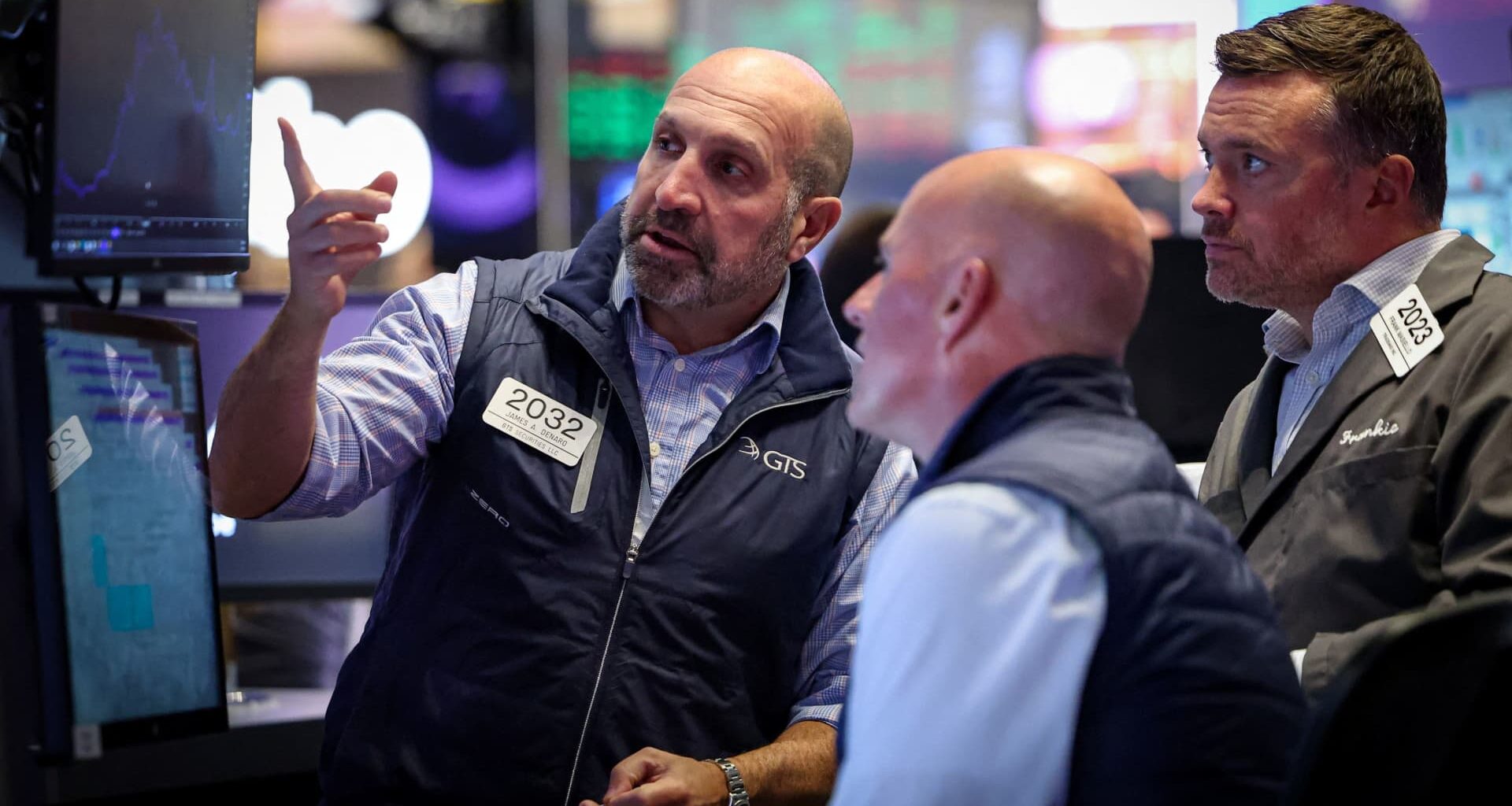Specialist traders work inside a booth on the floor at the New York Stock Exchange on Sept. 10, 2025.
Brendan McDermid | Reuters
Stock futures fell Tuesday as a potential U.S. government shutdown loomed. Despite the latest declines, Wall Street was headed for an unusually strong September.
Futures tied to the Dow Jones Industrial Average fell 127 points, or 0.3%. S&P futures slipped 0.2% along with Nasdaq-100 futures.
Although shutdowns aren’t usually market-moving events, this time could be different as investors are already wary about a slowing labor market, the risk of stagflation and elevated stock valuations. A shutdown could also prompt rating agencies to rethink the condition of U.S. credit, which was downgraded in May by Moody’s.
After a meeting between President Donald Trump and top Democrats and Republicans, Vice President JD Vance said Monday evening: “I think we’re headed to a shutdown because the Democrats won’t do the right thing.”
The Labor Department also announced Monday that the September nonfarm payrolls report scheduled to release Friday will not come out if the U.S. government suspends operations. The report is one of several upcoming key data releases that will provide crucial information about the direction of the economy ahead of the Federal Reserve’s upcoming October policy meeting. Exacerbating concerns over the shutdown was President Donald Trump’s threat over the weekend that a shutdown could result in mass firings of federal workers.
Jack Janasiewicz, lead portfolio strategist and portfolio manager at Natixis Investment Managers, said that a government shutdown could lead to some “tangential effects” in near-term market sentiment and volatility.
“With investors keenly aware of the risks to a softening labor market and simultaneously laser focused on the signs of tariff pass-through to inflation, any delay in the collection of economic data resulting from the shutdown could lead to increased uncertainty. And with that increased uncertainty we often see a pick-up in financial market volatility,” Janasiewicz said.
“Could such uncertainty be large enough to dent the economic backdrop and along with it risk assets? Probably not a lasting impact but the longer the uncertainty drags out, the greater the risk,” he said.
Echoing that view, Adam Crisafulli of Vital Knowledge anticipates that the shutdown would weigh on market sentiment if it were to last longer than a considerable amount of time, a situation that could delay important economic data releases. Government shutdowns don’t often last beyond two weeks.
“When it comes to Washington, the market widely expected a shutdown to happen, so investors are largely sitting tight for now, but if this extends beyond two weeks, people will start to become more concerned,” the firm’s founder said.
A strong September
Major U.S. stock indexes continue to hover near record highs ahead of the final September session. The S&P 500, which has averaged a 4.2% drop for the month over the last five years, has increased more than 3% this month.
Additionally, the Dow Jones Industrial Average has gained 1.7%. The tech-heavy Nasdaq Composite has outperformed the other two benchmark indexes with a roughly 5.3% gain in September.
Tuesday will also bring the end of the third quarter. The broad-based index is up 7.4% quarter to date, while the Nasdaq is set to notch a nearly 11% quarterly gain. The Dow is up 1.7% over the three-month period, which would mark its fifth positive quarter in a row.
